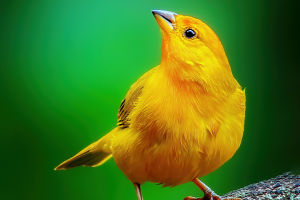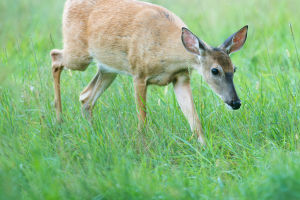Birds are renowned for their impressive cognitive skills, from solving intricate puzzles to crafting tools.
Recent research has unveiled the underlying reason behind these remarkable abilities: birds possess a higher concentration of neurons in their tiny brains than mammals, including primates.
Published in the Proceedings of the National Academy of Sciences, the groundbreaking study is the first to systematically quantify the number of neurons in the brains of various bird species.
Led by neuroscientist Suzana Herculano-Houzel and her team at Vanderbilt University, the research involved measuring the neuron count in species like the Lesser Spotted-breasted Meadowlark and the emu, known as the Australian ostrich, standing at approximately 1.8 meters tall.
The findings revealed that birds exhibit a greater density of neurons per square inch in their brains than mammals.
This discovery suggests that birds can generate more brainpower per pound of brain tissue than mammals, explaining their extraordinary cognitive prowess. Furthermore, the study demonstrates that evolution has devised a mechanism to construct complex brains in birds.
Scientists have long been fascinated by the cognitive abilities of birds, which include tool-making, food hiding, future planning, mirror self-recognition, problem-solving, and understanding cause and effect.
Remarkably, some birds exhibit a 'theory of mind,' allowing them to infer the thoughts of their fellow avians, a trait observed in very few animal species.
Previously, it was believed that birds' brains were structurally distinct from those of primates. However, this notion has been debunked, as studies have shown that avian brains share striking similarities with mammalian brains.
According to Herculano-Houzel, the outdated perception that birds lack intelligence no longer holds: "We discovered that birds, particularly songbirds and parrots, possess a remarkably high number of neurons in their forebrains, enabling them to perform advanced cognitive functions such as future planning and pattern recognition."
For instance, parrots possess a comparable number of neurons in their brains, equivalent to the size of a pecan, to those found in macaque brains, nearly the size of a lemon.
Functional connectivity studies on bird brains have revealed similarities to mammals, including rats, cats, monkeys, and even humans. The dense neuron populations in birds provide them with enhanced cognitive abilities relative to their brain size.
Herculano-Houzel further explains, "Nature employs two key parameters in brain design: brain size and neuron count, as well as the distribution of neurons across different brain regions." This indicates that evolution has devised multiple strategies for constructing powerful brains.
While neuroscientists previously believed that larger brains necessitated more giant neurons to cover greater distances, the study suggests an alternative approach: smaller neurons for local connectivity and a smaller number of giant neurons for long-range connections, maintaining an average neuron size while preserving brain compactness.
The sequence of brain evolution remains uncertain. It is plausible that birds, descendants of dinosaurs, evolved efficient brains to sustain essential flight capabilities. Conversely, it is conceivable that the densely packed avian brain evolved first, followed by mammals developing different brain structures.
Birds possess remarkable cognitive abilities attributable to their densely populated neurons, challenging prior assumptions about brain functionality compared to mammals. This groundbreaking research sheds light on the intricacies of avian intelligence and underscores the diverse mechanisms of brain evolution.


